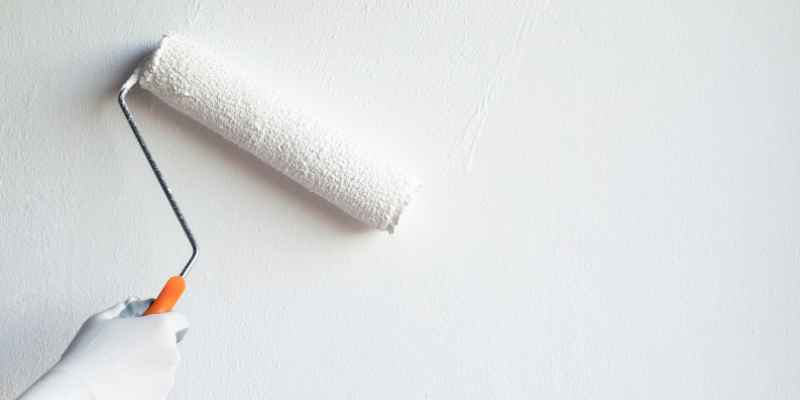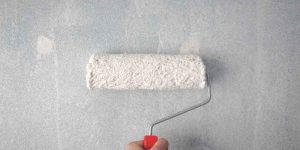It is recommended to wait for at least 24 to 48 hours before applying polyurethane on paint to ensure it is completely dry. Applying the polyurethane too soon can lead to a negative impact on the final result of the project.
Before applying polyurethane, it is crucial to understand the appropriate drying time for the paint used. Rushing the process can result in cracks, bubbles, and other imperfections. We will discuss the importance of waiting for paint to dry and how long it should dry before applying polyurethane.
We will also provide tips on ensuring a successful finish for your project.
Best Tools To Use
To apply polyurethane over paint, it is important to let the paint dry completely before applying polyurethane. The drying time depends on various factors such as humidity, temperature, and the type of paint used. Check out tutorials on YouTube by The Mountain View Cottage, The Furniture Sisters, and paulsDIYsolutions for tips on the best tools to use for a smooth and durable finish.
Sandpaper
The first tool you will need when applying polyurethane over paint is sandpaper. It is crucial to sand the surface before applying the finish, as it helps the polyurethane adhere to the paint. Sandpaper helps to smooth small imperfections such as bumps, ridges, and dust particles that may have been trapped in the paint. Before applying polyurethane, you should sand the surface with medium-grit sandpaper, such as 120-grit, then wipe the surface with a clean cloth.
Sponge Applicators
Using a sponge applicator is also essential when applying polyurethane over paint. These applicators are suitable for small and large surfaces alike. They come in various sizes and densities, allowing you to work with a range of polyurethane types. They help to distribute the polyurethane evenly and minimize brush marks, ensuring a smooth finish.
Wooster Brush
If you choose to use a brush instead of a sponge applicator, the Wooster Brush is an excellent choice. This brush is specifically designed for applying polyurethane and varnish. It features a rounded edge, which ensures a smooth finish and minimizes brush marks. The Wooster Brush comes in various sizes, making it suitable for small and large projects.
In conclusion, sandpaper, sponge applicators, and the Wooster Brush are the best tools to use when applying polyurethane over paint. They will help you achieve a smooth, even finish, and ensure the polyurethane adheres to the paint. Remember to allow the paint to dry completely before applying polyurethane, following the manufacturer’s instructions for drying time.
Types Of Polyurethane
It is important to wait until the paint is completely dry before applying polyurethane, as applying it too soon can cause the two substances to mix and create a messy finish. Factors that can affect paint drying times include the type and thickness of the paint, as well as the temperature and humidity levels in the room.
Therefore, it is best to wait at least 24 hours before applying polyurethane over paint.
When it comes to applying polyurethane over paint, it is important to understand the different types of polyurethane and their characteristics. The two main types of polyurethane are water-based and oil-based. Each type of polyurethane has its own advantages and disadvantages, so it is essential to choose the appropriate one for your project needs.
Water-Based Polyurethane
Water-based polyurethane is known for its quick-drying properties, which is perfect for projects that require fast completion times. This type of polyurethane has a low odor, which makes it suitable for indoor projects, so you don’t have to worry about the smell lingering for days. It also dries to a clear finish, ensuring that the color and details of the painted surface remain visible.
Oil-Based Polyurethane
Oil-based polyurethane is a more traditional option, and it is known for its durability and resistance to scratches and marks, making it ideal for high-traffic areas such as floors and furniture. While this type of polyurethane takes longer to dry, it provides a harder finish and longer-lasting protection. It is important to note that oil-based polyurethane has a strong odor and should only be used in well-ventilated areas.
Comparison of Different Polyurethane Brands
There are numerous polyurethane brands on the market, each with its unique characteristics. The most popular ones include Varathane Triple Thick Polyurethane, Varathane Clear Oil-Based Polyurethane, General Finishes High-Performance Polyurethane, Minwax Clear Polycrylic Polyurethane, and Varathane Clear Satin Polyurethane. To choose the best polyurethane brand for your project, compare the drying time, odor, durability, and the finish, ensuring you get the right one for your needs.
In conclusion, the drying time of paint before applying polyurethane depends on the type of paint and environmental conditions. Water-based polyurethane is perfect for indoor projects and quick drying times, while oil-based polyurethane is excellent for high-traffic areas. When choosing a polyurethane brand, compare the characteristics to get the right one for your project needs.
Prepping The Surface

Allow the paint to dry for at least 24 hours before applying polyurethane to ensure proper adhesion and avoid bubbling or peeling. Follow the specific dry time instructions for your paint and consider factors such as temperature and humidity. Proper preparation of the surface is also crucial for a successful application.
Painting a surface requires precise preparation to ensure that the paint and polyurethane adhere properly. The surface should be clean, dry, and smooth before applying polyurethane. In this section, we will look at the various steps involved in prepping a painted surface for polyurethane application.
Cleaning The Painted Surface
Before sanding, the painted surface must be cleaned thoroughly to remove any dirt, dust, or debris. It is essential to ensure that the surface is totally clean before sanding. Use a clean, lint-free cloth or a soft-bristled brush to remove any debris or dust. You may also use a damp cloth to clean the surface, but ensure it is dry before sanding.
Sanding The Surface
Sanding is a vital step to ensure a smooth, even, and steady application of polyurethane. It helps to improve the adhesion of the polyurethane to the painted surface. Use fine-grit sandpaper to sand the painted surface gently. You can use a sanding block or an orbital sander to make the job easier. Ensure to sand along the grain and not against it. Avoid over-sanding the surface, as it can cause damage to the paint and the surface underneath.
Choosing The Right Polyurethane
Choosing the right polyurethane depends on the type of paint and the surface. It is essential to select a polyurethane that is compatible with the paint used on the surface. Also, choose the appropriate sheen level (gloss, semigloss, or satin) that suits your preference and the environment. Water-based polyurethane is ideal for light-colored paints and surfaces, while oil-based is best suited for dark-colored surfaces.
In conclusion, prepping the surface is a crucial step before applying polyurethane to a painted surface. Ensure that the surface is clean, dry and that sanding is done correctly. Choosing the right polyurethane is equally essential for a beautiful and long-lasting finish. Remember to follow the manufacturer’s instructions on drying times before proceeding to the next coat or before using the surface.
How To Apply Polyurethane
Before applying polyurethane, the paint should be completely dry, which usually takes about 24 hours. It is important to ensure that the surface is clean, smooth, and free from any dust or debris before applying the polyurethane coat. Using the proper tools and techniques can help achieve a professional-looking finish.
Proper Brush Loading Techniques
Before applying polyurethane, it is important to properly load your brush. Start by dipping your brush into the polyurethane, then tapping it against the edge of the container. This helps to remove any excess and prevent dripping. Once you have the right amount on your brush, you can start applying it to the surface you wish to coat.
Laying Down The First Coat Of Polyurethane
When applying the first coat of polyurethane, use a drag coating technique. This means dragging your brush from one end of the surface to the other, without lifting it off the surface. Make sure to apply a thin coat, as thick coats can lead to dripping and unevenness. Once you have applied the first coat, let it dry completely before applying the second coat.
Laying Down The Second Coat Of Polyurethane
After the first coat has dried completely, you can apply the second coat of polyurethane. This time, use long, even strokes to apply the polyurethane. Again, make sure to apply a thin coat to prevent dripping. If necessary, you can sand lightly between coats to help the polyurethane adhere better.
Sand Between Coats Of Polyurethane
If you choose to sand between coats of polyurethane, make sure to use a fine-grit sandpaper. Sand lightly to avoid damaging the first coat of polyurethane. Once you have sanded, remove any dust or debris from the surface before applying the next coat of polyurethane.
How Long To Wait Before Applying Polyurethane
Before applying polyurethane over painted surfaces, it is important to let the paint dry completely. The drying time will vary depending on the type of paint used, but waiting at least 24 hours is recommended. It is always best to follow the manufacturer’s instructions for the particular paint and polyurethane being used.
Drying Time Of Paint
Before a polyurethane coating can be applied to fresh paint, the paint must be completely dry. Any residual moisture or solvents can potentially cause issues with adhesion and drying of the polyurethane. The drying time of paint can vary depending on several factors such as the type of paint, the thickness of the paint layer, humidity, and temperature. Generally, oil-based paints take much longer to dry completely as compared to water-based paints. On average, a painted surface should be left to dry for at least 24-48 hours before applying polyurethane.
Curing Time Of Polyurethane
While the drying time of paint refers to the time required for the solvent to evaporate, the curing time of polyurethane refers to the time required for the coating to form a hard, protective film. Unlike paint, polyurethane goes through a chemical curing process that involves a reaction between the coating and atmospheric moisture. The curing time of polyurethane can vary depending on the type of coating, the thickness of the layer, and the ambient humidity and temperature. On average, polyurethane can take around 24-72 hours to cure properly.
When To Apply Polyurethane
It is important to wait until the paint is fully dry before applying polyurethane. The recommended waiting time is at least 24-48 hours, as mentioned previously. You should also ensure that the painted surface is clean, dry and free of any dust or debris before applying the polyurethane. It is also important to choose the right type of polyurethane for your project. Water-based polyurethane is a good option for painted surfaces, while oil-based polyurethane can yellow over time and is best used for unfinished wood surfaces.
In conclusion, the waiting time before applying polyurethane is critical to ensure a durable and long-lasting finish. Waiting for the paint to dry completely before applying the polyurethane will help avoid any issues with adhesion or finishing. Additionally, using the right type of polyurethane and allowing it sufficient time to cure properly will help ensure a beautiful and protective finish for your painted surfaces.

Frequently Asked Questions On How Long Should Paint Dry Before Applying Polyurethane
How Long Should Paint Dry Before Sealing?
Wait at least 24 hours before sealing paint with polyurethane to allow proper drying time. However, the time may vary based on paint type, thickness, and humidity levels. It is best to check the paint manufacturer’s instructions for recommended drying times.
Can You Put Polyurethane Over Latex Paint?
Yes, you can put polyurethane over latex paint. Polyurethane is a finish material, not paint. You can apply a coat of polyurethane over the base coat of paint for a glossier finish. Make sure the painted surface is clean, use a suitable applicator, apply one coat, scuff, and then apply a second coat for best results.
Sanding lightly between coats is recommended.
How Do You Apply Polyurethane Over Fresh Paint?
To apply polyurethane over fresh paint, first make sure that the painted surface is clean. Choose your applicator and apply one coat, then scuff. Apply a second coat and sand lightly with fine sandpaper between coats. It is possible to apply polyurethane over latex paint.
Do I Sand Between Coats Of Polyurethane?
Yes, you should sand between each coat of polyurethane. Not sanding can result in a poor finish. Sand lightly with fine sandpaper to remove any bumps between coats.
Conclusion
Polyurethane application over paint is a two-step process, which requires proper drying time for the paint. Depending on the type of paint and the environmental conditions, the drying time may vary. It is always recommended to wait for at least 24 hours before applying polyurethane to ensure the paint is completely dry.
Following the necessary steps and precautions can help achieve the desired results and a flawless finish. It is crucial to choose the right polyurethane, applicator and to sand between coats. These simple steps can go a long way in ensuring the longevity and durability of your project.


